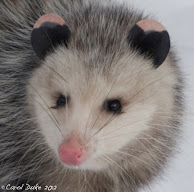What is normal or average anymore? It seems that days are spread out more like a delicately hand-stitched quilt laying loosely across a large bed . . . not in triangles or squares but in free-form patterns that hardly relate to one another except in hues. Vivid colors, with a play of values, fills the eyes and dreams of those that slip beneath basted layers of wrinkled cloth . . . pieces torn and recombined.
Such are our New England August days, once felt to be the warmest of the summer. Somehow the year has been taken apart and reset with September's cooler temperatures now placed where August's heat used to be. Memories of summer ways, warm fronts, cold fronts and days get reshuffled into another sort of design.
Climate change is not simply hot and cold, wet and dry . . . sadly we must visualize another sort of quilt made of ancient dead organisms, fossil fuels, dirty values and sooty tints pieced in carbon footprints across an unimaginative covering that is choking, liquefying and slowly reshaping shorelines and beloved landscapes over the huge berth of our earth.
The little glass globe, that we all love to handle and shake, in order to see clean snow falling over a quaint home, has cracked in large proportions never to be repaired. A nightmare creeps in between the fragments of fabric presenting a globe where pesticide and other unimaginable poisons fall as deadly flakes into a world where all life is sickened. As we place the fragile memory of a child's more beautiful dream back in a protected case and slide back under what we believe to be a safe and cozy blanket, we fail to see how it too is becoming unraveled while we kick away the cover of truth too often and go about our usual "Oh Well, What Can I Do?" ways.
It is in the little things we do everyday, in our pennies we fail to count, where we might see a change. Collectively, in our right minds, with our voices and dollars demanding a greener world; where families are not displaced, wooly, white bears may safely stand and butterflies continue to fly, we may yet save the fine flora and fauna that we are so intricately a part of.
This morning when I woke, I thought to just write whatever came out of me for an hour and so the paragraphs above appeared. You may skip them and simply join me in this landscape I call home, where our native Joe-Pye Weed stretches towards Walnut Hill and the sky above.
Where Red-spotted Admirals extract vital life-enhancing nectar.
Tiny colorful American Coppers pollinate marjoram.
A more muted beauty with great eyes . . . Common Wood Nymph sipping marjoram.
A garden falls over into itself.
Yesterday, for a split moment at least, I was excited to think I eyed a Monarch butterfly. Alas, the Monarch was but a Viceroy. Though a beauty in its own right, this butterfly is not one I can raise and observe its metamorphosis. It is a joy I have had for thirty years and the absence of Monarch butterflies in our gardens this year and across parts of the country is greatly felt. Pesticides from GMO's is greatly to blame.
Daylilies are fading but there are still some to delight certain butterflies. Hydrangeas in the middle garden are still offering beauty and nectar too.
A Spicebush Swallowtail wearing pollen dust enjoys a dip and sip from deep within the well of this flower and soon flies on to another. I am exhibiting two separate blooms visited by two different butterflies captured weeks apart. I do not know of spicebush growing here . . . perhaps a neighbor grows it or there is another plant, growing on our land or nearby, that this butterfly has decided to use as a host plant.
Even a teeny Delaware Skipper is attracted to the flavor of daylily and casts its proboscis towards the Hemerocallis reservoir of sweetness.
I should love to see from the compound eyes of a butterfly, for a day or five, when the birds are otherwhere and otherwise occupied.
Surely, seeing the world of colors, as this Greater Spangled Fritillary does, could inspire.
The daughter of Zeus may well exchange a glance from within a human eye and morph back into herself within this Aphrodite Fritillary butterfly. Perhaps by seeing our worlds from within other's eyes we may all grow more wise.
For a bird's-eye-view I have taken to writing about warblers and if you might enjoy seeing and learning more about these marvelous feathered friends of our gardens, forest and fields, why not take a click over to Native Plants and Wildlife Gardens to view various installments of my 'A Bestiary: Tales from a Wildlife Garden.'
May your days be filled with butterflies and birds . . . I would love to hear of your Monarch butterfly sightings, if you are of time and mind to share.


















































































































































